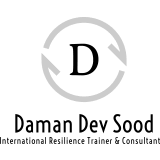This informal CPD article ‘Customer Experience and Employee Experience in ‘Delivering Excellence’, was provided by Daman Dev Sood, an International Resilience Trainer & Consultant.
Delivering Excellence can be defined as ‘Providing exceptional and high-quality products, services, or experiences to customers, clients, or stakeholders (internal as well as external).’ It is a business approach that focuses on meeting and exceeding customer expectations by consistently delivering outstanding results.
I recently came across an article from McKinsey.1 It says GCCs (Global Capability Centers) could cut their attrition rates by half.
“the best way to resolve the issue is by improving employee experience (EX), which strengthens employee loyalty and, as a result, resilience and continuity. Executives should treat EX as seriously as CX (customer experience) by being more scientific and more tailored in their approach”, it says, and recommends the following 5 steps:
1. Use personas and journeys to customize EX
2. Reimagine the role of manager to emphasize coaching and mentorship
3. Find new ways to embed culture and values for a hybrid work environment
4. Redesign the office for collaboration and connection
5. Rethink the traditional workday
In this article I will focus on three aspects of Delivering Excellence. This first step is knowing (better – understanding) your customers. For which developing Customer Personas and Customer Mapping Journeys are important. The concepts are applicable internally also i.e., developing Employee Personas and Employee Mapping Journey.
Employee Personas: are fictional representations of different employee segments within your organization. They help you understand the needs, preferences, and pain points, family background, past employment history of various employee groups. In order to create employee personas, gather data from your employees, such as surveys, interviews, and observations.
Identify common characteristics, goals, and challenges. Create distinct personas based on these insights. Employee personas help HR and management teams tailor communication, benefits, training, and support to meet the specific needs of different employee groups. They can guide the development of a more personalized Employee Experience.
Employee Journey Maps: are visual representations of the various stages and touchpoints an employee encounters during their tenure at the company, from targeting and recruitment to onboarding, daily work, and potential exit. In order to create an employee journey map, document the employee's interactions, emotions, and experiences, aspirations and expectations at each stage of their employment. This involves identifying key touchpoints, pain points, and areas for improvement.
Employee journey maps help HR and management teams identify areas where they can enhance the Employee Experience. By understanding the employee's perspective, organizations can make improvements in recruitment, onboarding, training, and ongoing support. Developing Employee Personas and Employee Journey Maps can lead to several benefits, including improved engagement, reduced turnover, and a more positive workplace culture. Just like Customer Personas and Customer Journey Maps, they provide a valuable framework for enhancing the experience and satisfaction of a crucial group of stakeholders within your organization.















